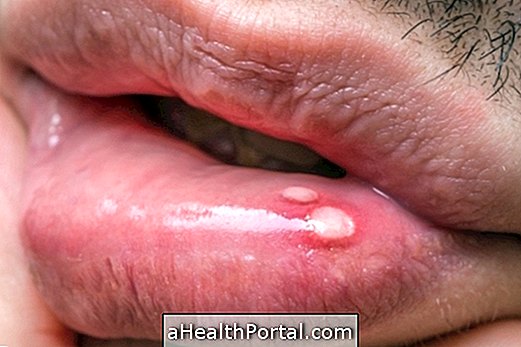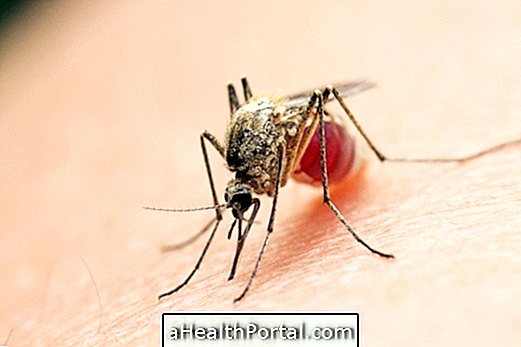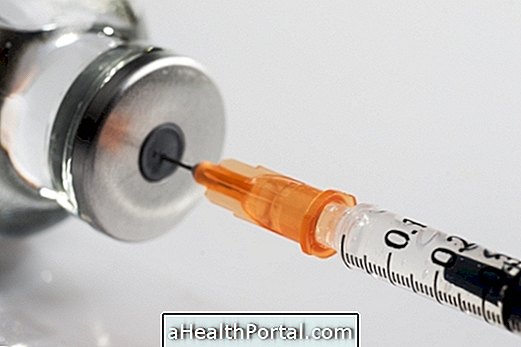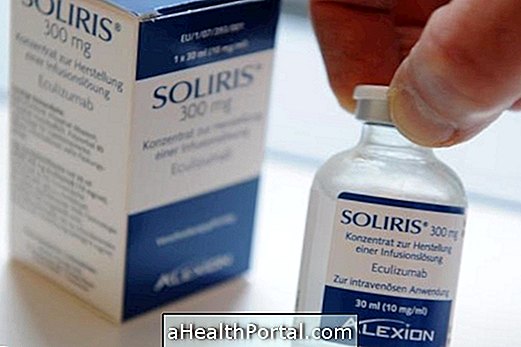To identify signs that may indicate the development of skin cancer there is an examination, called ABCD, which is done by observing the characteristics of spots and spots to check for signs that correspond to the cancer. The observed characteristics are:
- Asymmetry of the lesion: if half of the lesion observed is different from the other, it may be indicative of cancer;
- Rough edge: when the outline of the sign, paint or stain is not smooth;
- Color: whether the sign, paint or stain has different colors, such as black, brown and red;
- Diameter: if the sign, paint or stain have a diameter greater than 6 mm.
These characteristics can be observed at home, and help identify possible skin cancer lesions, but the diagnosis should always be made by a physician. Thus, when you have a stain, paint or sign with these characteristics it is recommended to make an appointment with the dermatologist.
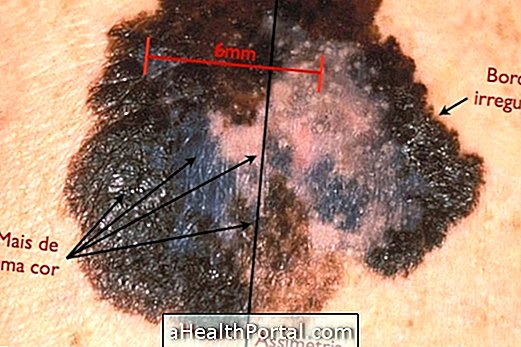
The best way to identify any change in the skin is to observe the entire body, including the back, behind the ears, head and also the soles of the feet, about 1 to 2 times a year, facing the mirror. Irregular spots, signs or spots that change in size, shape, or color, or wounds that do not heal more than 1 month, should be sought.
A good option, to facilitate the examination, is to ask someone to observe all their skin, especially the leather hair, for example, and go photographing the larger signs to observe their evolution over time. See how the dermatological examination is done.
Other signs that may indicate skin cancer
Although most skin cancers have the above characteristics, there are other signs that may also indicate the development of cancer. These signs vary according to the type of cancer and can be:
1. Signs of non-melanoma skin cancer
The signs of non-melanoma skin cancer can be:
- A small white or reddish wound or lump on the skin that can cause itching;
- Wound or lump in the skin, which grows rapidly and forms a conical, accompanied by secretion and itching;
- A wound that will not heal and bleed for several weeks;
- Growing wart.


Basal cell carcinoma and squamous cell carcinoma are two types of nonmelanoma cancer, more frequent, less severe, and easier to heal. However, squamous cell carcinoma when diagnosed at an advanced stage may in certain cases spread to other organs of the body. Learn more about basal cell carcinoma.
2. Melanoma Skin Cancer
Symptoms of melanoma may be a pimple or dark sign on the skin, with irregular borders, accompanied by symptoms such as itching and peeling of the skin.


Malignant melanoma is the most dangerous skin cancer of all, and can cause changes in an existing signal, such as an increase in size and change in color or shape. The main cause of melanoma is prolonged exposure to the sun, hence the importance of using sunscreen daily and avoiding too much exposure to the sun. See what melanoma is and how to treat it.
When to go to the doctor
You should go to the dermatologist whenever you see changes in a sign, paint or stain. In most cases, a sign with changes is not cancer and in these situations, the doctor may ask for periodic appointments to see if there have been changes in the skin, or even choose to remove the sign surgically to prevent the cancer from developing.
How is the diagnosis and treatment of skin cancer diagnosed?
The diagnosis of skin cancer is done by a dermatologist or oncologist, who does a specific and detailed analysis of the sign, paint or stain using a special magnifying glass, by examining ABCD, analyzing the shape, size, color and diameter of the pint, sign or stain. At the end of this examination, if the doctor suspects skin cancer, you can ask for further tests, such as a biopsy of the lesion, for example. However, if the change is not cancer, the doctor may indicate other care for the treatment of the injury, such as tablets or ointments.
Treatment for skin cancer depends on the type of cancer and the state of the cancer, and may include surgery, radiation therapy or chemotherapy. In addition, the sooner skin cancer treatment is started, the more chance there is of cure. See how skin cancer treatment can be done.

